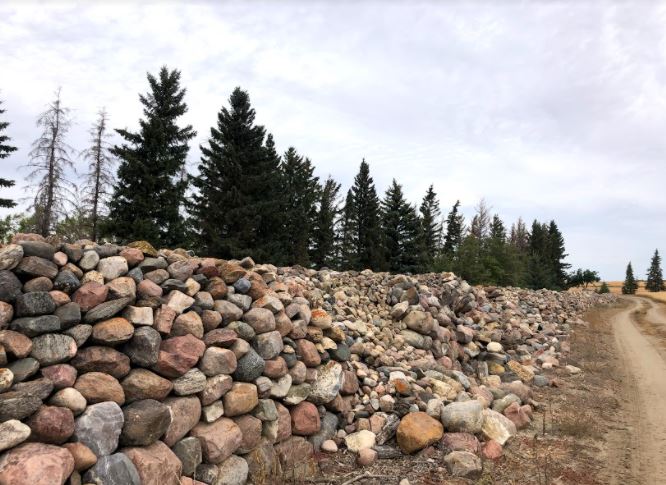
Remembering Stonewall Johnson
By Mallorie Rast
In everyday lives, minuscule pieces add up to great things, and it is in the little actions or thoughts of our day that we create a legacy of either inspiration or discouragement for the generations after us. Albert Johnson left legacies behind him, and one of them is a large monument that was built one little stone at a time.
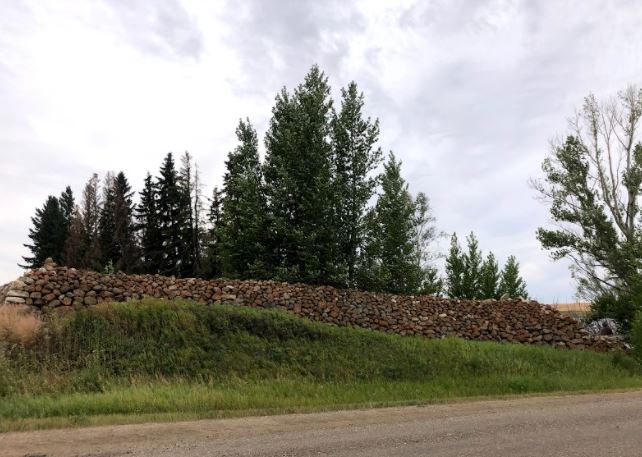
Known as the “Great Wall of Saskatchewan,” the impressive hand-crafted stone structure rises quite literally out the Saskatchewan prairie just 1 and a half miles out of the village of Smiley. Flanked by farmland on either side and curving around a large slough, the wall is in two parts, totalling roughly ½ mile in length, with a base of 6 feet in width and ranging in heights of up to 12 feet. These numbers alone impress guests, but the magnitude of the project is only realized when you can envision “Stonewall” Johnson building the wall completely on his own and totally by hand.
How did this wall get started? Arguably, the first stones were placed around 1962, but the story truly started in 1912. Adventure and pure grit obviously runs through the family genes, as Johnson’s parents left an established farm in Minnesota to trek miles of U.S. and Canadian prairies and woodlands to lay claim upon the free land offered in a newly-formed province called Saskatchewan. Johnson humorously illustrated the family’s spirit of rugged adventure as his bed during the long trip was in the belly of a large kitchen cooking stove!
The Johnson family placed their homestead on a high hill overlooking the unbroken ocean of the prairie landscape and set to work. According to family legend, Johnson began building mini stone walls as a youngster, to give himself shade in the treeless prairies while watching the family’s cattle. In an interesting twist, the family did not initially own the land where the stonewall now sits. That land was gained through a deal after a neighbouring farmer couldn’t pay for custom plow work done by the Johnson’s 110 Case steam engine outfit.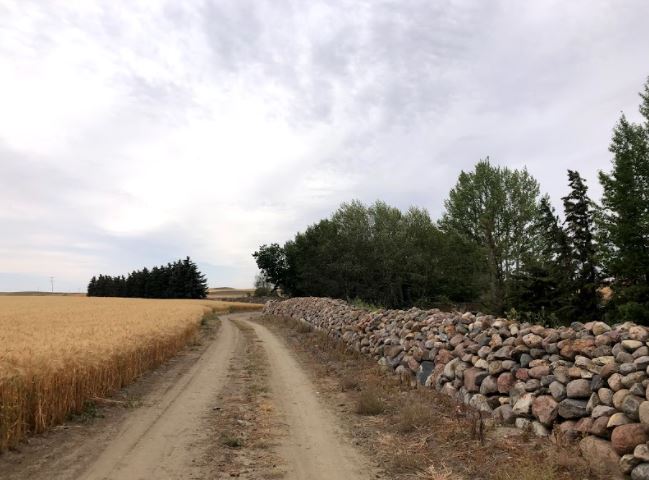
As a young adult, Johnson made the journey back to Minnesota to farm the family’s original land and gain an education. His spirit needed the wide and open spaces of Saskatchewan however, so he returned at the age of 22 and married Doris Stuart on November 12, 1932. The couple had three children, two daughters and a son, during their years together.
The early seeds of the wall were planted with an innocent purchase of a 1961 tractor, of a front end bucket the following year and out of Johnson’s search to find the perfect spot to plant sweet corn. Down by a large slough, Johnson figured the land was perfect to grow the food farm kids grew on, but the area was filled with stones. Described by many as a man of great and rugged strength, Johnson used a crowbar to pry the rocks out of the ground before placing them into the tractor bucket for Ken to dump. As the pair worked systematically through the area, the rocks ended up in piles in a roughly straight line next to the slough. Johnson planted the sweet corn, and as it grew so did an idea in his mind.
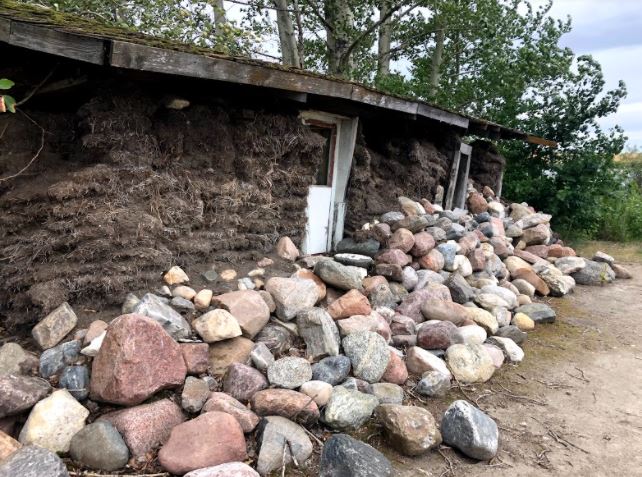
Nobody really knows why Johnson started assembling the rocks together to form a wall, perhaps it was a bored whim on one hot and sticky afternoon, or perhaps it was the need to always have his hands busy. No matter the starting reason, it is clear to all that once he started building, Johnson uncorked a keg of determination and sheer stick-to-itiveness. Johnson placed the rocks carefully, ensuring that the sloped rocks were used to form the exterior walls, while smaller and rounder rocks were placed in the middle, forming an impossibly complex pattern of interwoven pieces of stone.
As the wall and attention around it from the outside world grew, Johnson became only more determined to continue. As 5, 10, and then 20 years passed, the attention grew until Johnson was hitting newspapers, and TV shows. It was the legendary Grant MacEwan who coined in the Calgary Herald the nickname Johnson became known by, “Stonewall Johnson.” It was all this media attention that suddenly put Smiley, and the Great Wall of Saskatchewan, on the map.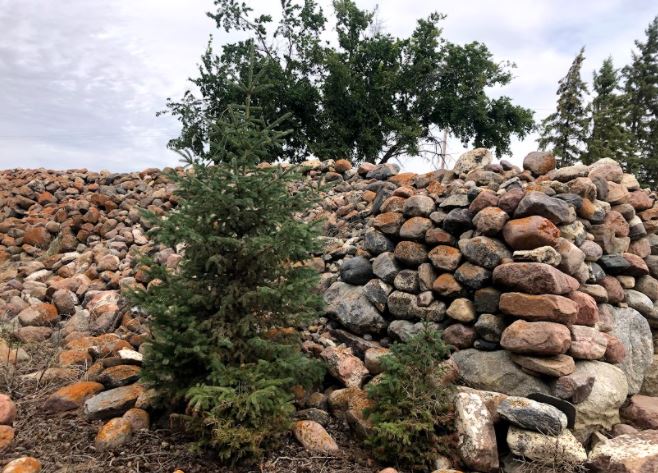
Visitors from all over Canada and other parts of the globe began showing up to see the large stone fence built by one man, StonewallJohnson. The family started keeping guest books down by the wall so folks could sign them. I was able to take a peek at one book, and the list of names in 2000 to 2001 alone filled a coil-bound notebook. Beside the names were listed hometowns across Western Canada, and some from Eastern Canada, as well as international ones such as Washington and Minnesota, one hometown hailed from across the Atlantic to Sussex, England.
If I had been able to locate the book from around 1994, I would have seen my own name from one of my family’s visits. A filing notebook still rests in the sod house, slightly water damaged, but bearing names and dates up to August 2020.
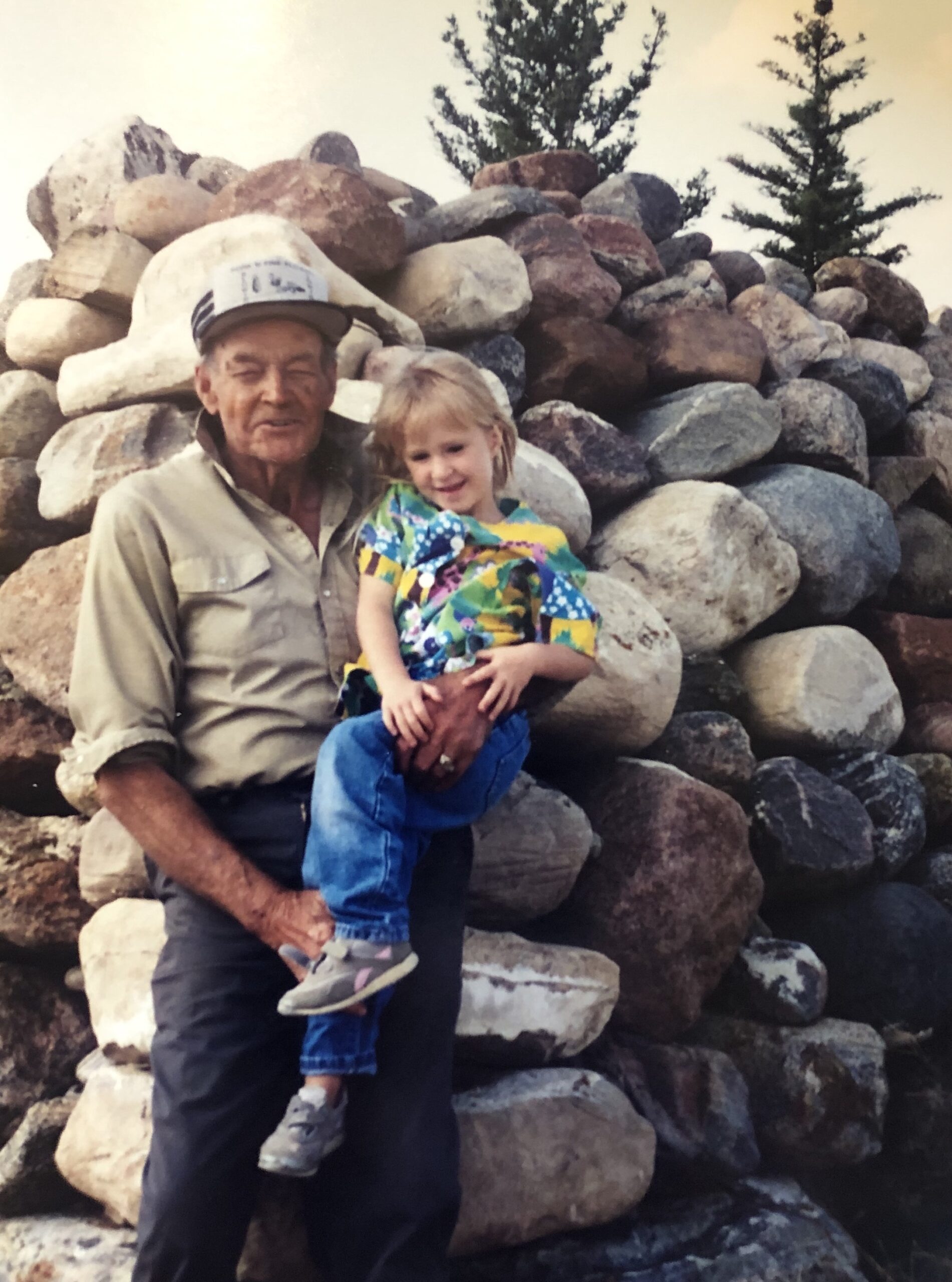
Johnson, who started the wall when he was in his 50s and moving through his 60s and 70s, worked on the wall in the spring, summer and fall, then chopped wood all winter to keep his strength up. The rocks were gathered all by hand from various fields and were toted to the wall building site on the backs of pick-up trucks, tractor buckets and four-wheelers. At about the halfway mark of the current wall, Johnson decided to give the wall a break. Some months later, Ken found old rock piles that were buried by blowing dust in the dirty 30s, and dug them out with his backhoe. The sight of so many turned up rocks started an urge he could not resist, and soon he was back at the wall, more invigorated than ever.
In the late ’80s, a Senior’s group decided to build a sod house replica, and Johnson had just the place to do it. Since he was one of the very few still strong enough to cut and lift the sizable sod bricks to build the replica, Stonewall was the main architect, with the aid of others, Charlie Russell was one. Soon, the stone fence had the full feel of an attraction as visitors could come to the stonewall, check out the sod house, take a picnic on one of the wooden benches left for that purpose, visit the farm site, purchase some field fresh sweet corn, and take a ride on Ken’s pontoon boat in his handcrafted canal, which is another story.
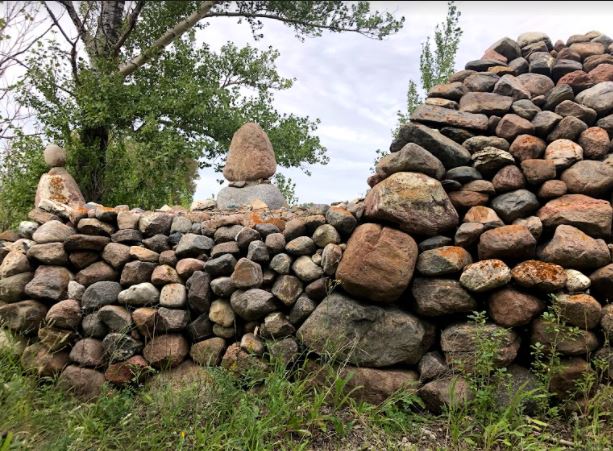
In 1991, nearly thirty years after the wall was started, Stonewall placed the last stone on the wall at the age of 82. He passed away at the age of 92 in 2001. While some parts of the wall are crumbling from age and soil contractions due to freezing and thawing, the wall remains a palpable testimony to a man who not only believed in but breathed the values that tamed our province from the wild ocean of prairie, to a growing province–the values of hard work, pure grit, and determination.
Photo Credit: Mallorie Rast
For the latest information and for more updates on everything Kindersley ‘Like’ the Kindersley Social Facebook page below…








































